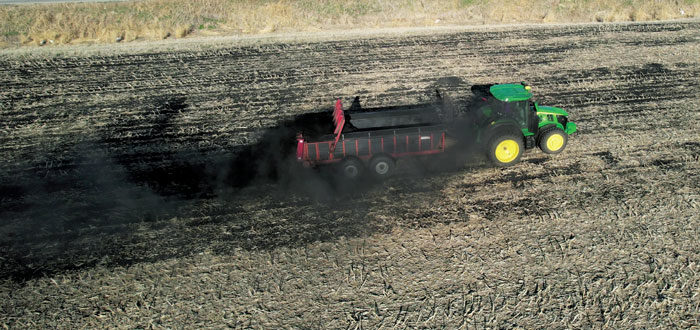No-Till Farmer
Get full access NOW to the most comprehensive, powerful and easy-to-use online resource for no-tillage practices. Just one good idea will pay for your subscription hundreds of times over.

University of Nebraska-Lincoln researchers are testing the effects of biochar on a 16-acre field in collaboration with other members of the Lincoln Biochar Initiative. The trials will measure plots treated with: 1. biochar only, 2. biochar and municipal wastewater biosolids, 3. biosolids only and 4. conventional management practices with no treatment. Photo by: Lincoln Biochar Initiative
After using biochar for only a single growing season, Nash Leef says he’s seen a transformative change in the silty-clay soils of his Nebraska vegetable and cut-flower farm
Leef, a co-owner of Salt Slope Farmers’ Cooperative near Lincoln, has been involved with the use of biochar in agriculture for more than 7 years and currently works part-time as a contractor with the Lincoln Biochar Initiative in cooperation with the University of Nebraska (UNL), the Lincoln municipality and the Nebraska Forest Service. The collaboration is experimenting with farm-scale applications of specially prepared charcoal — aka biochar — to boost soil microbial activity, water-holding capacity and soil carbon sequestration.
“Using the Haney Test, which evaluates soil health indicators such as soil respiration and the ratio of water -soluble fractions of organic carbon and organic nitrogen (N) to formulate a soil health score, our beds treated with biochar score significantly higher than control beds where the charcoal product was not applied,” he says.
Leef’s comparison examines production beds treated with biochar, horse manure and composted vegetable residue, with adjacent beds treated with only manure and compost. After one season, the biochar beds had a soil health score of 43.37, compared with non-treated bed scores of 25.2. The organic matter (OM) levels in the biochar beds were 14.1%, while the control beds tested 4.1%.
“If you can save fertilizer and water, you make your entire system more efficient…”
The amounts of biochar used in the vegetable beds are much higher than is currently economically…